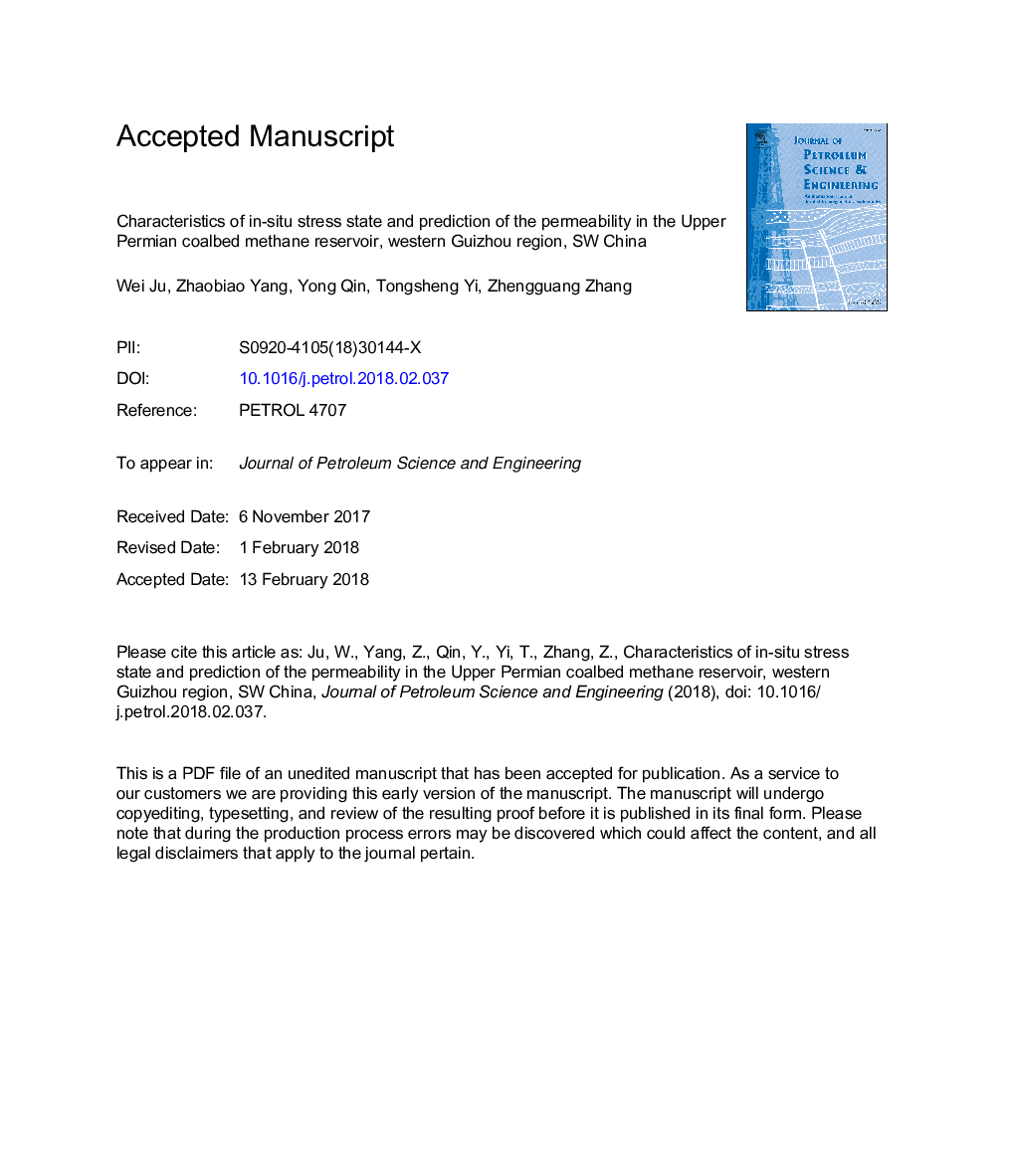| Article ID | Journal | Published Year | Pages | File Type |
|---|---|---|---|---|
| 8125017 | Journal of Petroleum Science and Engineering | 2018 | 35 Pages |
Abstract
Coal permeability and in-situ stress state are important parameters for coalbed methane (CBM) exploration and development; however, the distribution pattern of the Upper Permian CBM reservoir permeability is poorly understood in the western Guizhou region, SW China. In the present study, based on measured injection/falloff and in-situ stress data in the Upper Permian coal seams of western Guizhou region, the present-day in-situ stress field, and its correlation with coal permeability were investigated. The orientation of the horizontal maximum principal stress (SHmax) indicated a dominantâ¯â¼â¯NW-SE-trending. In addition, the present-day in-situ stress field showed an important control on coal permeability. The permeability in the Upper Permian coal seams decreased exponentially with the increased effective in-situ stress magnitude. By utilizing the finite element method (FEM), the present-day in-situ stress field in the western Guizhou was numerically analyzed based on a geomechanical two-dimensional (2D) model. Distribution of coal permeability in the Upper Permian CBM reservoir was predicted based on the relationship between coal permeability and effective in-situ stress magnitude. The results indicated that, in the western Guizhou region, vertically, coal permeability was relatively high and widely distributed shallower than approximately 780â¯m below ground level (bgl), whereas, it was extremely low and regularly varied with burial depth deeper than approximately 780â¯m bgl. Laterally, the distribution pattern of coal permeability was characterized by strong heterogeneity due to well-developed faults and folds. High values of the Upper Permian coal permeability were located in regions around Nayong-Zhijin, Panxian-Anlong and along Shuicheng-Liuzhi-Ziyun. The present study may provide geological references for the CBM reservoir productivity and subsequent analysis (e.g., wellbore stability, hydraulic fracturing design, and fault reactivation studies, etc.) in the western Guizhou region.
Related Topics
Physical Sciences and Engineering
Earth and Planetary Sciences
Economic Geology
Authors
Wei Ju, Zhaobiao Yang, Yong Qin, Tongsheng Yi, Zhengguang Zhang,
